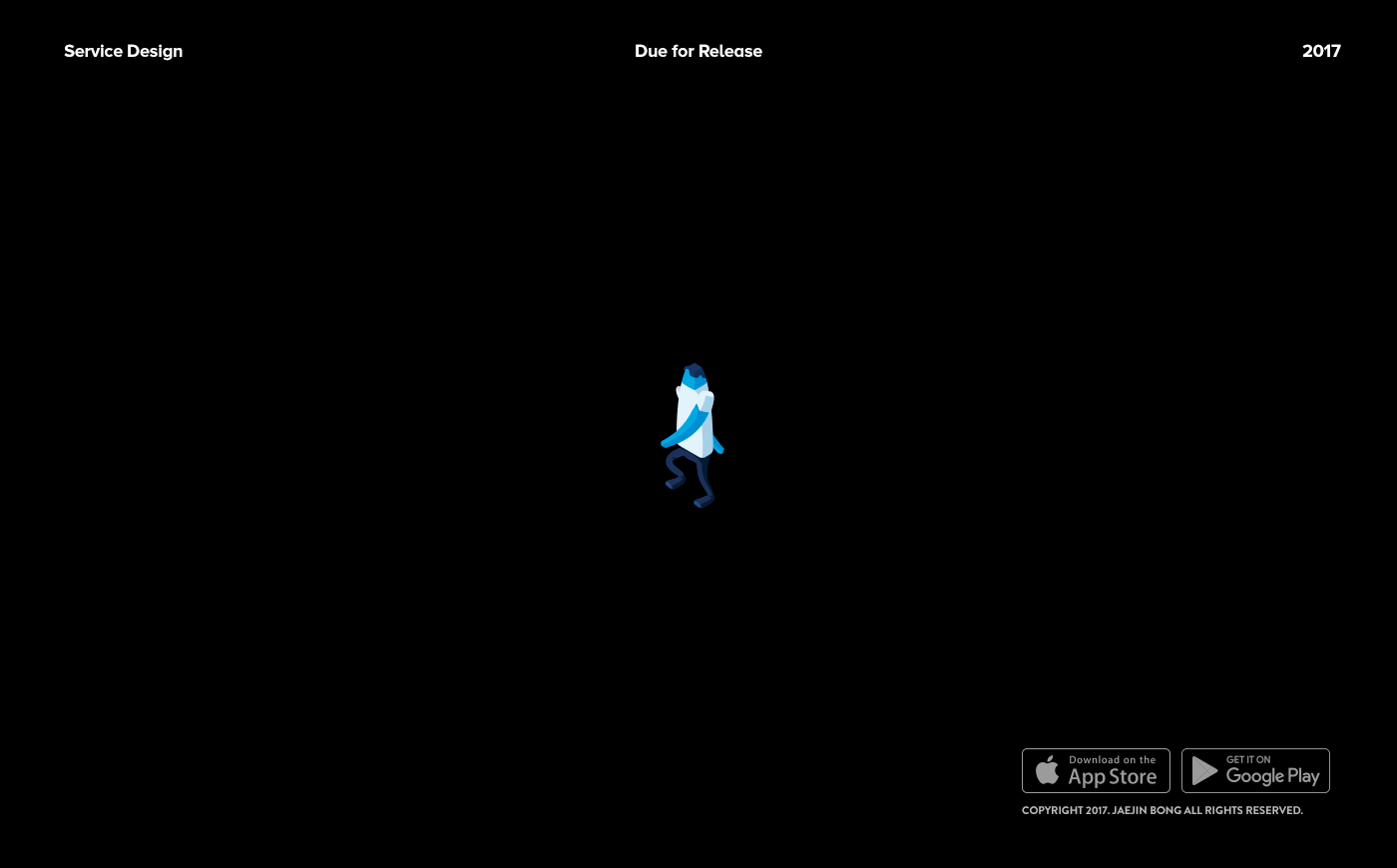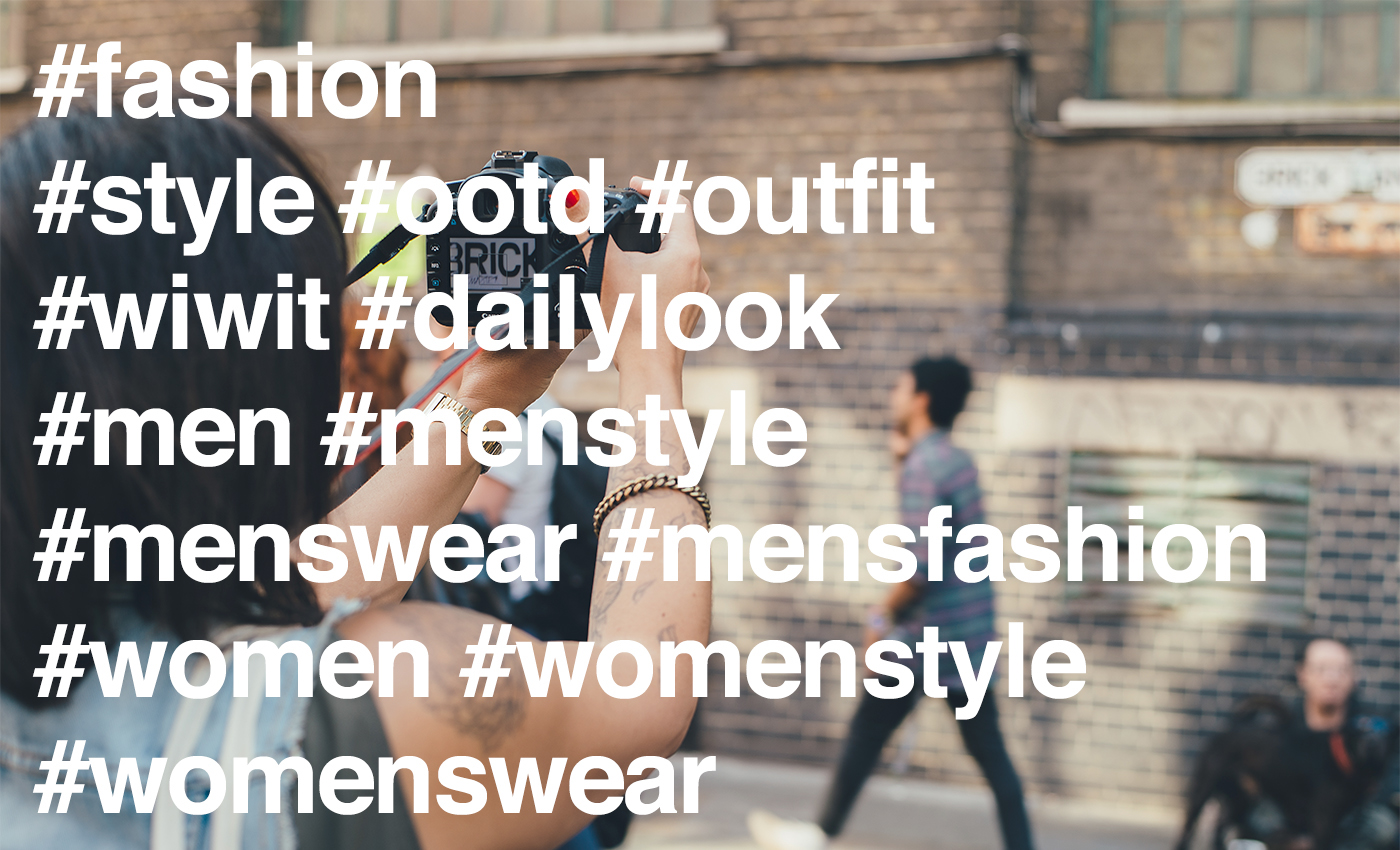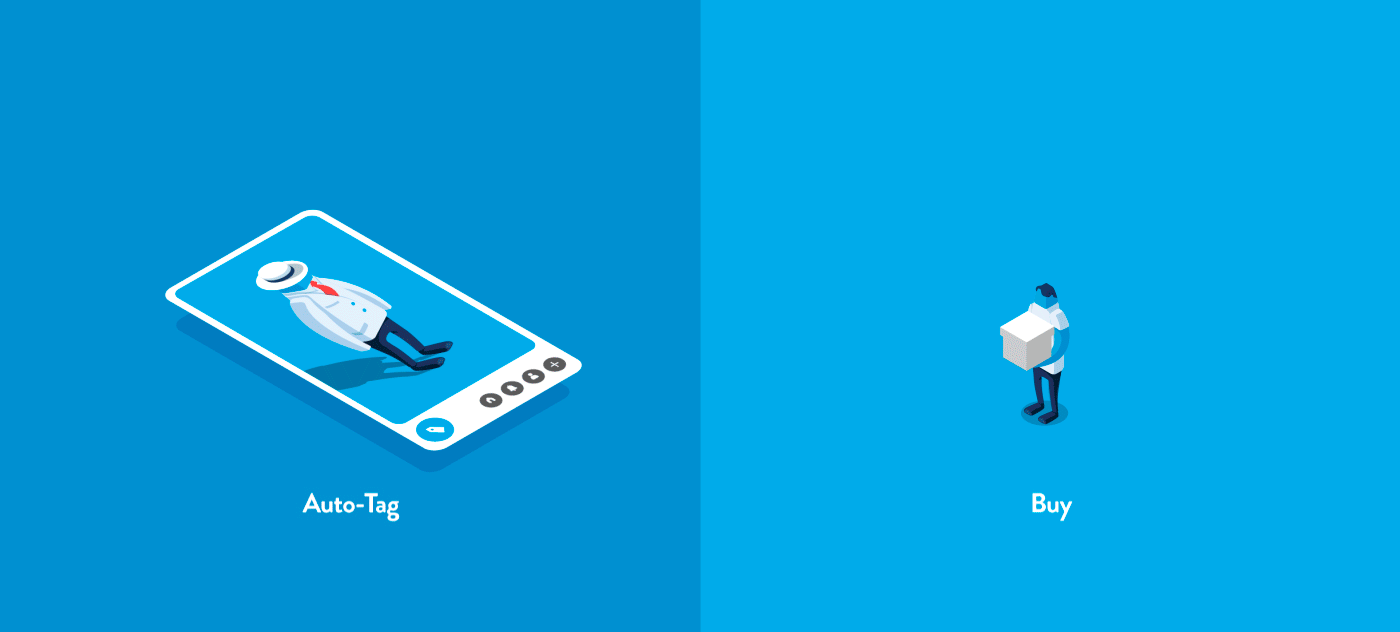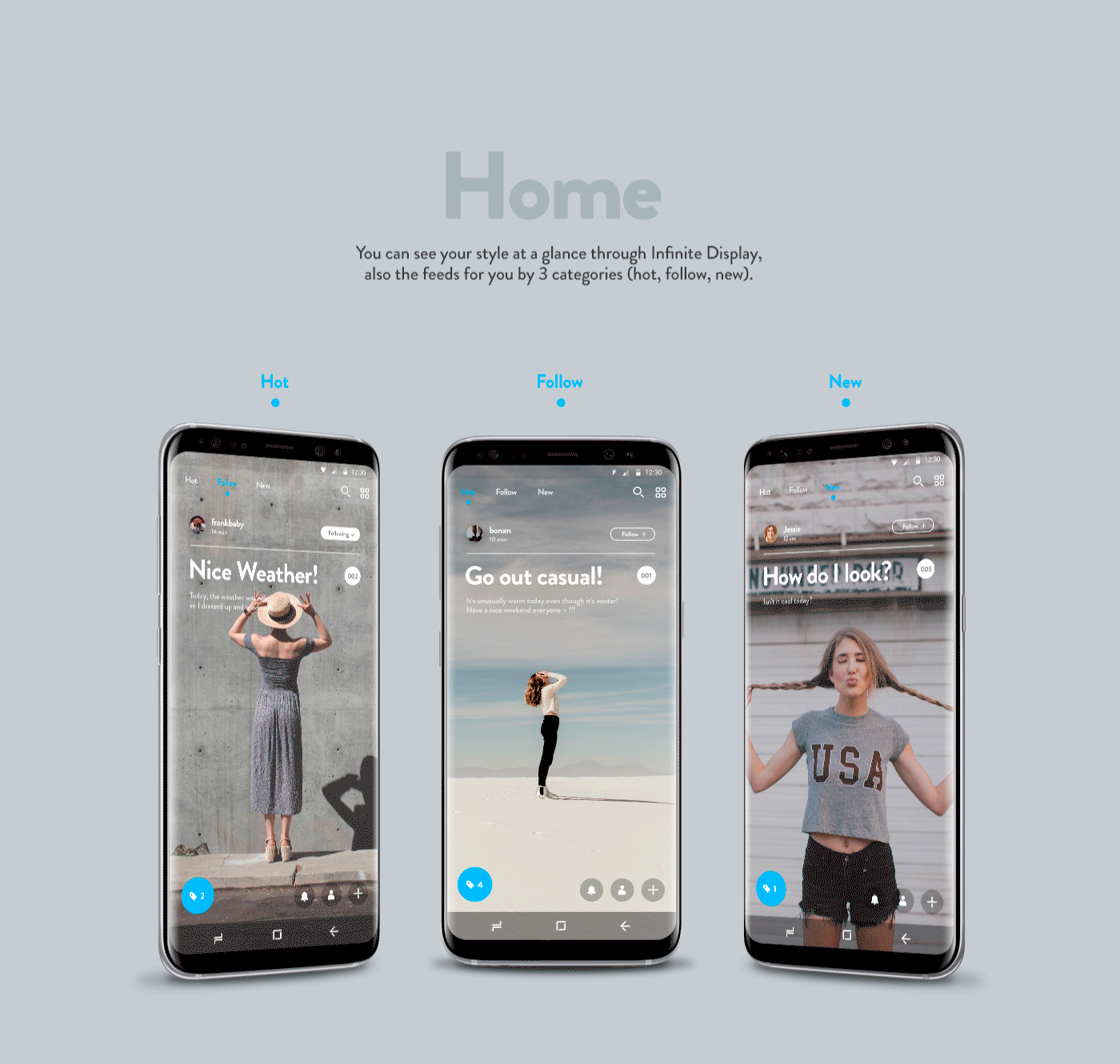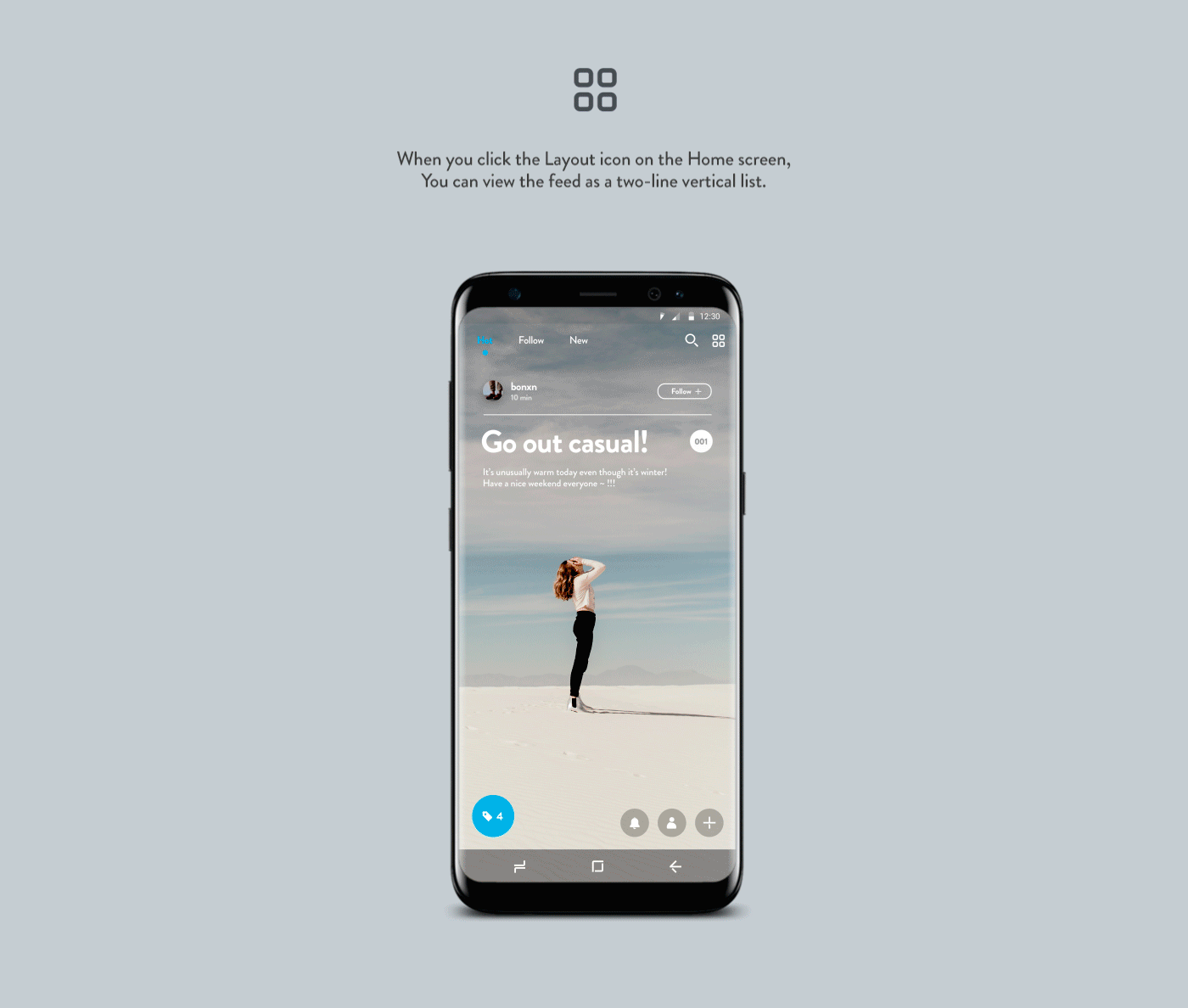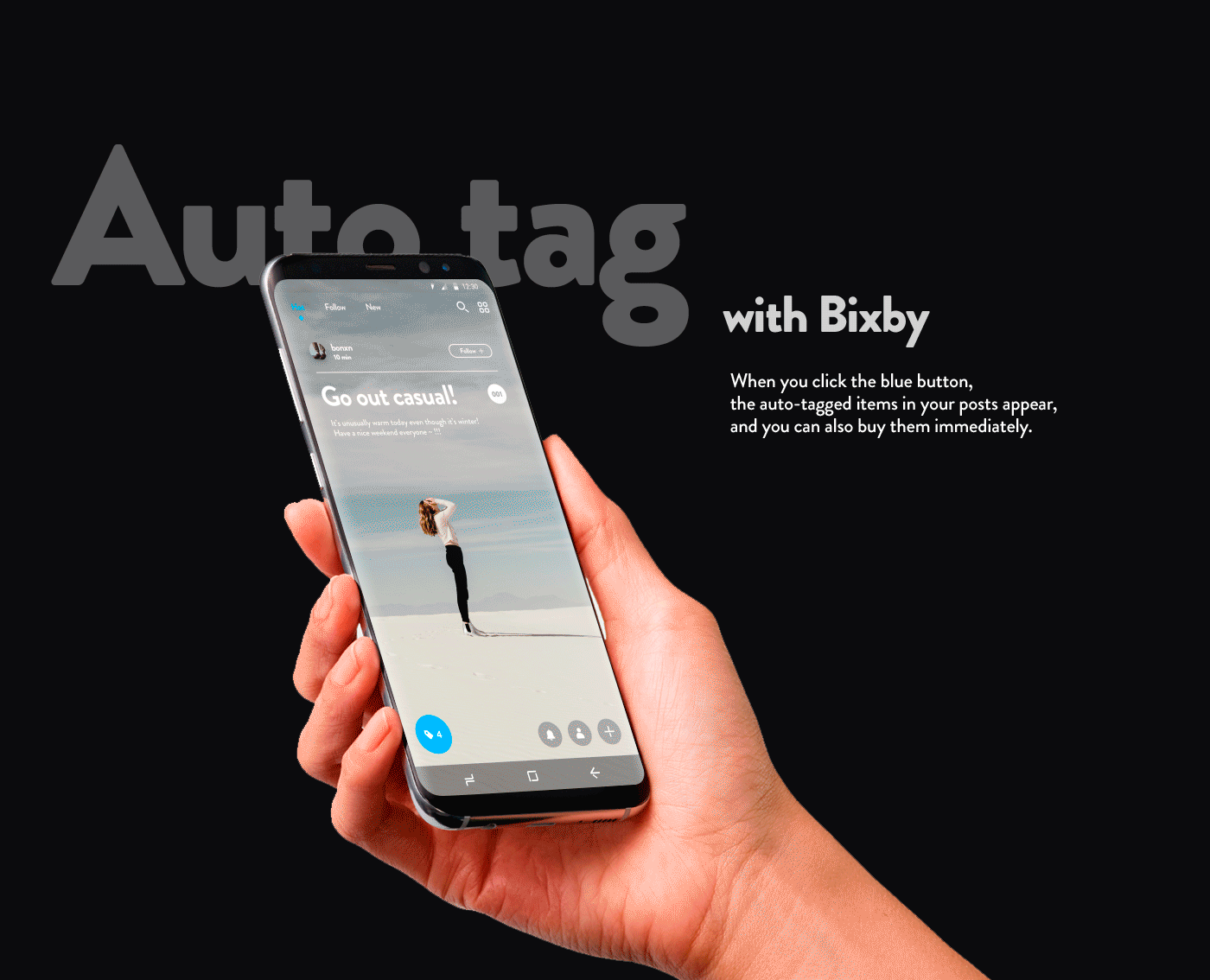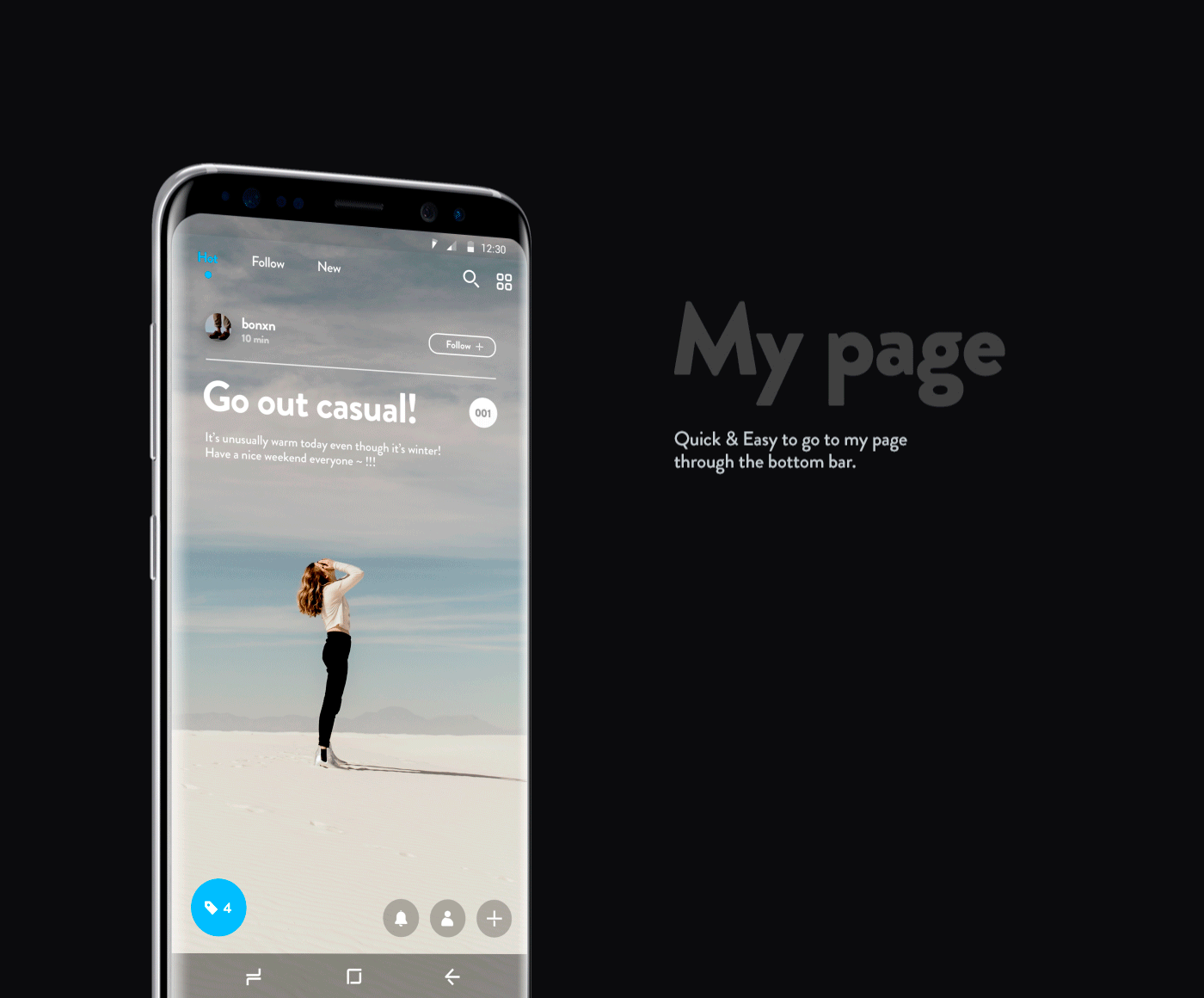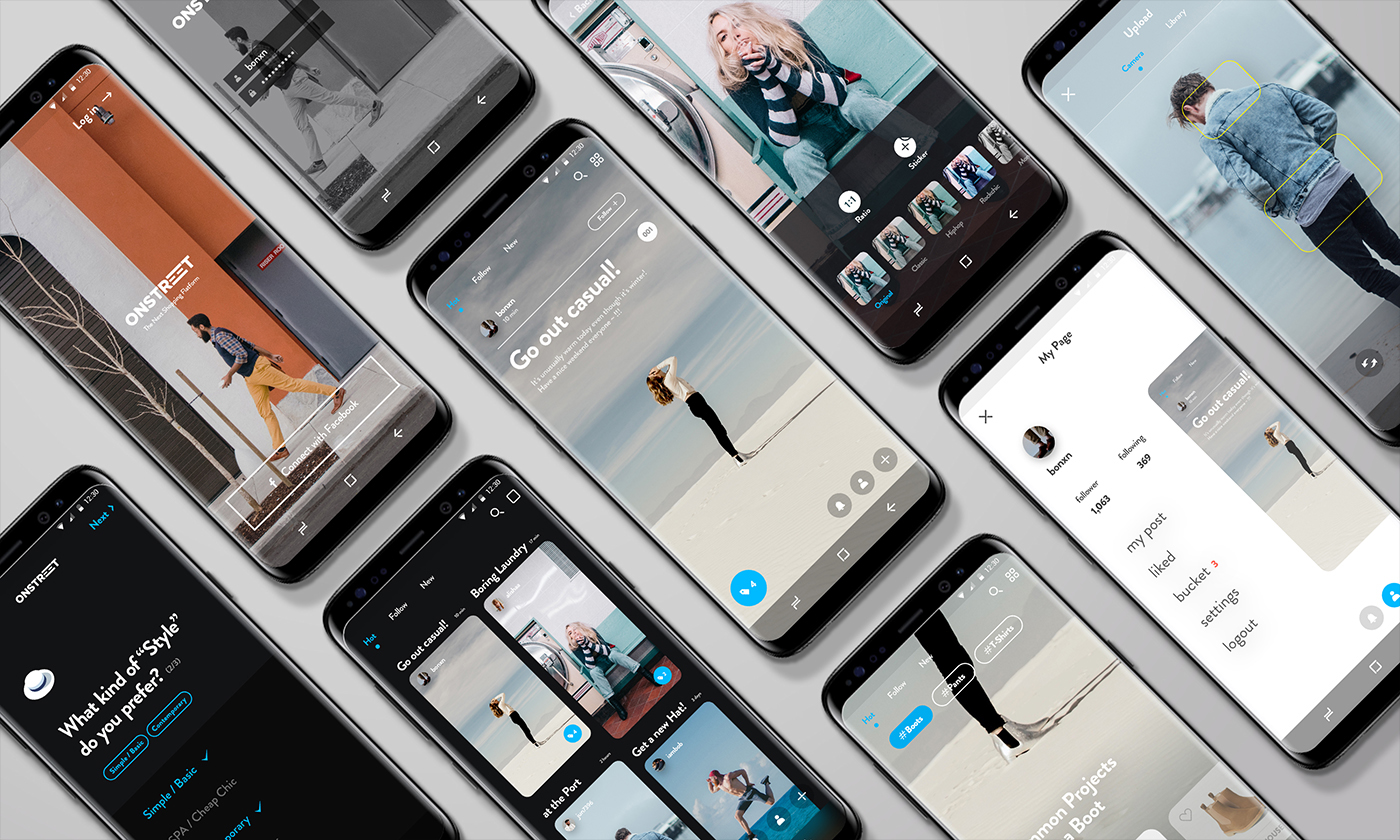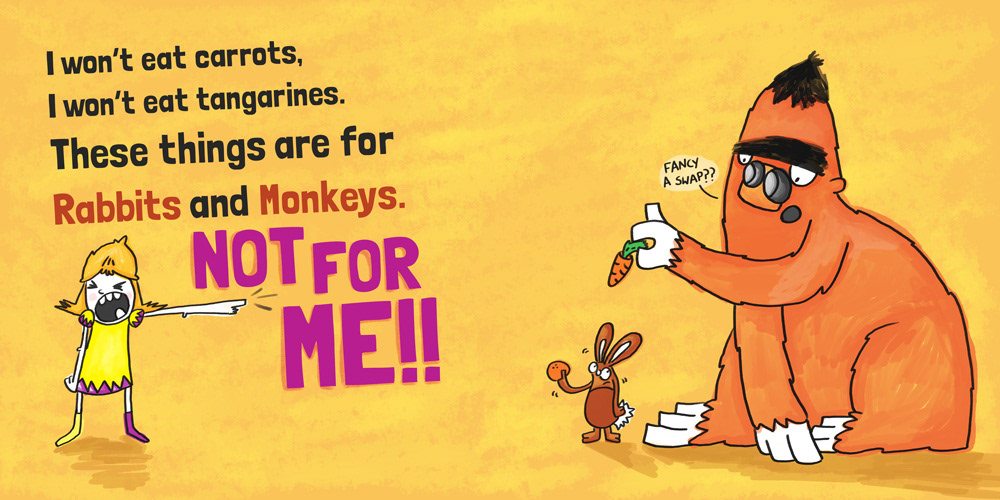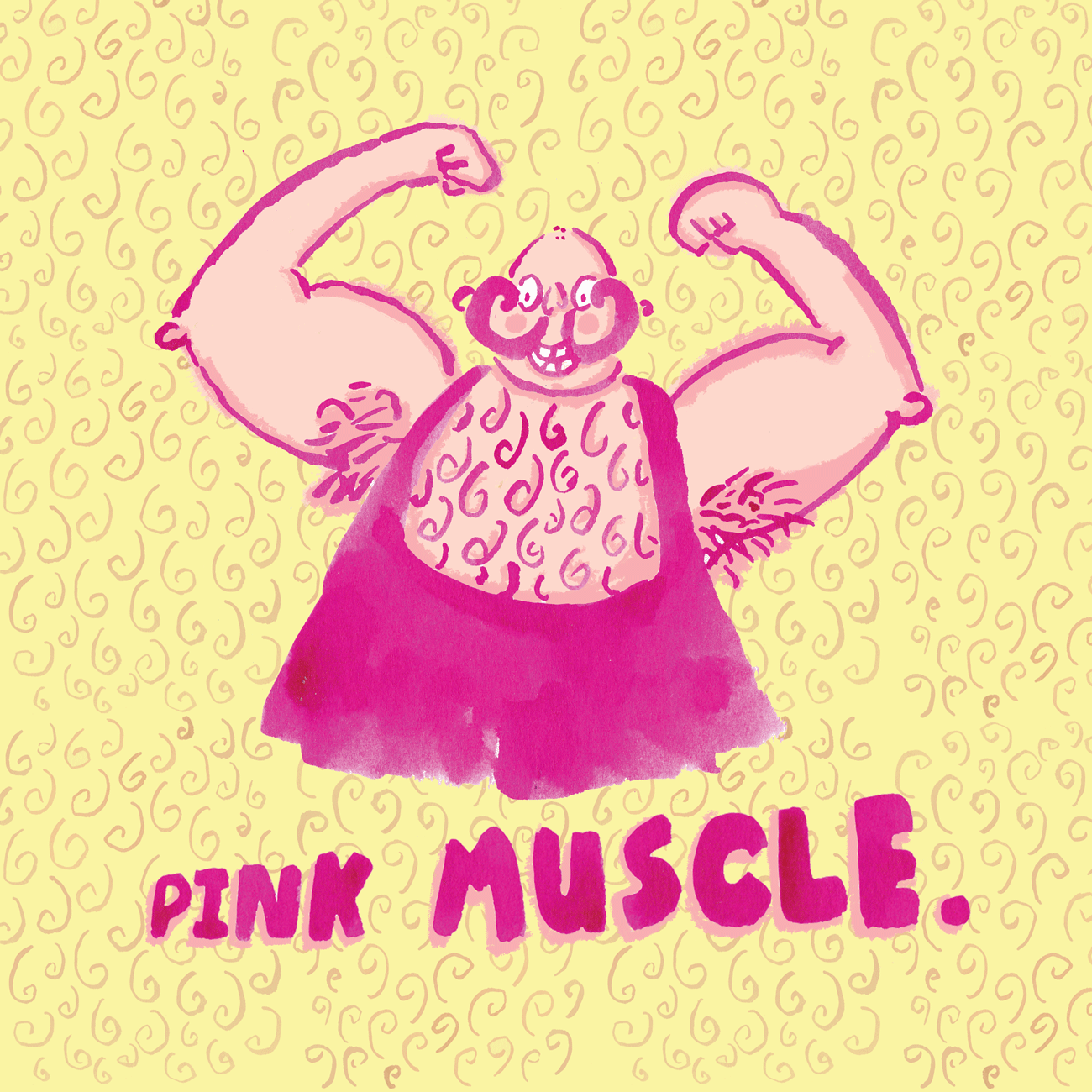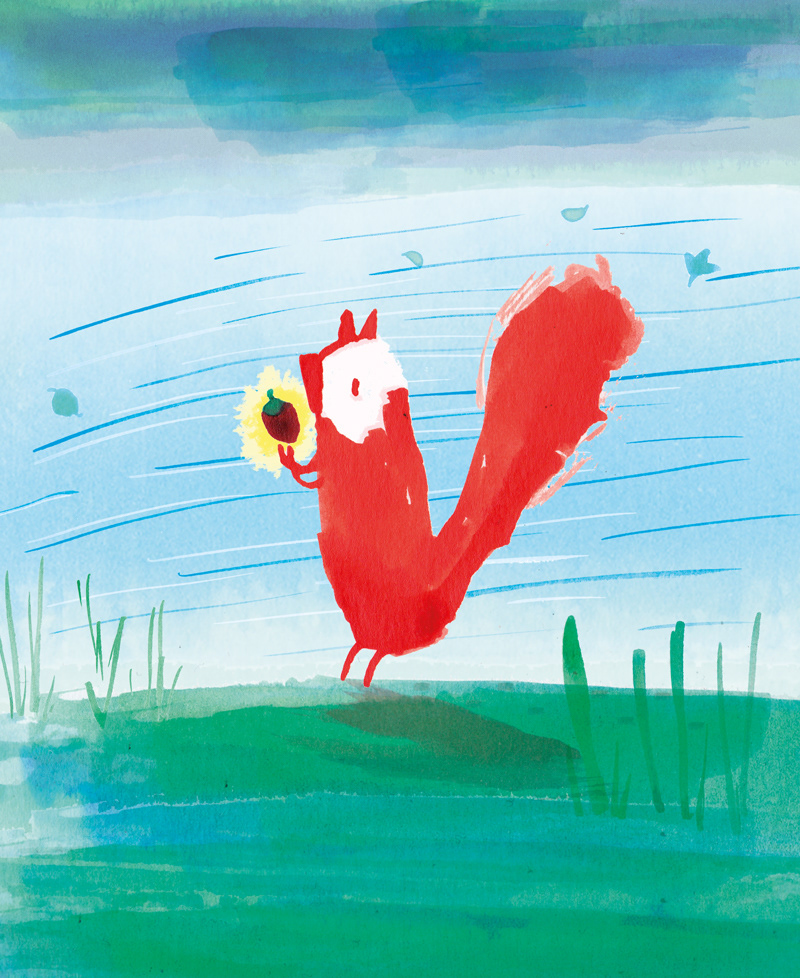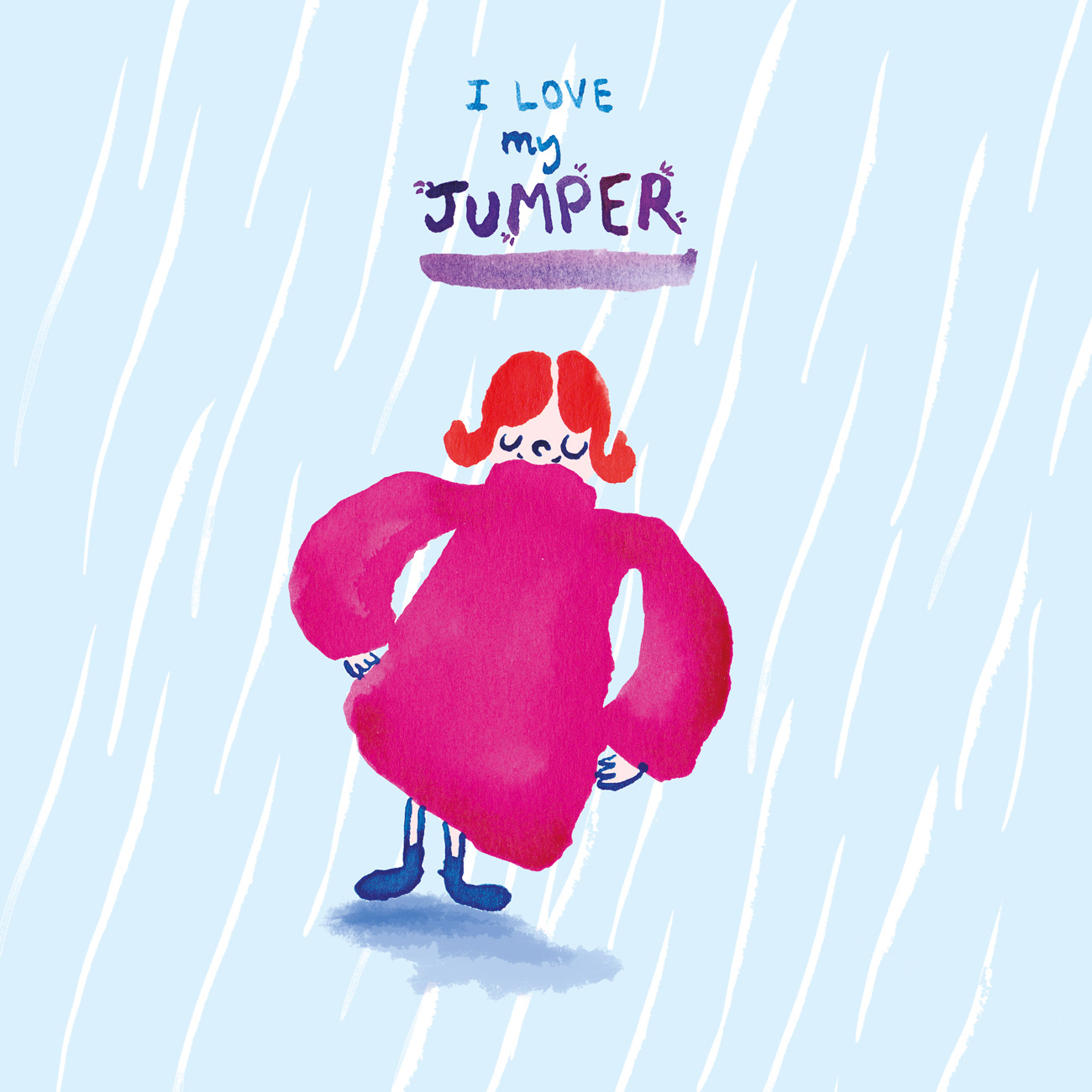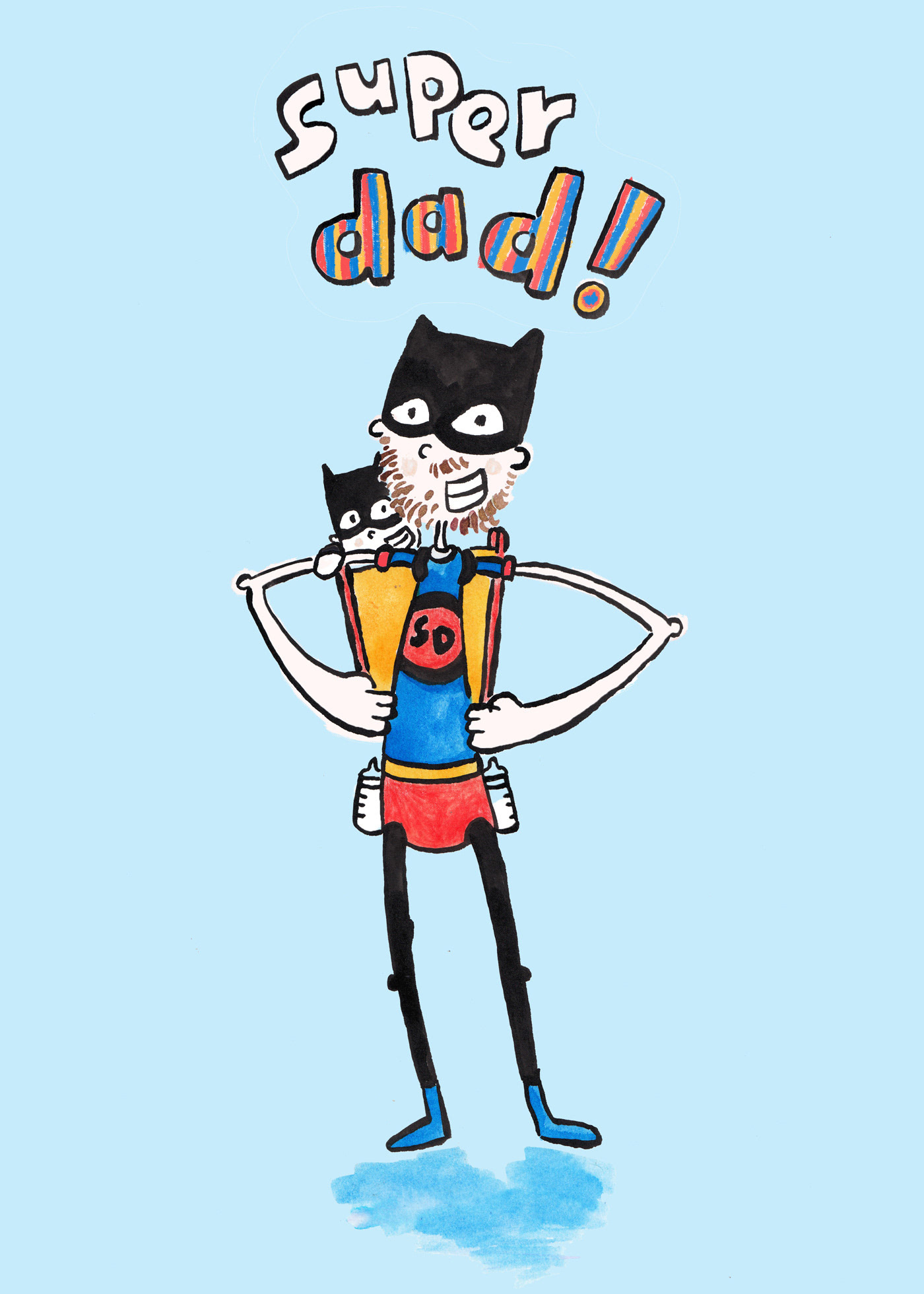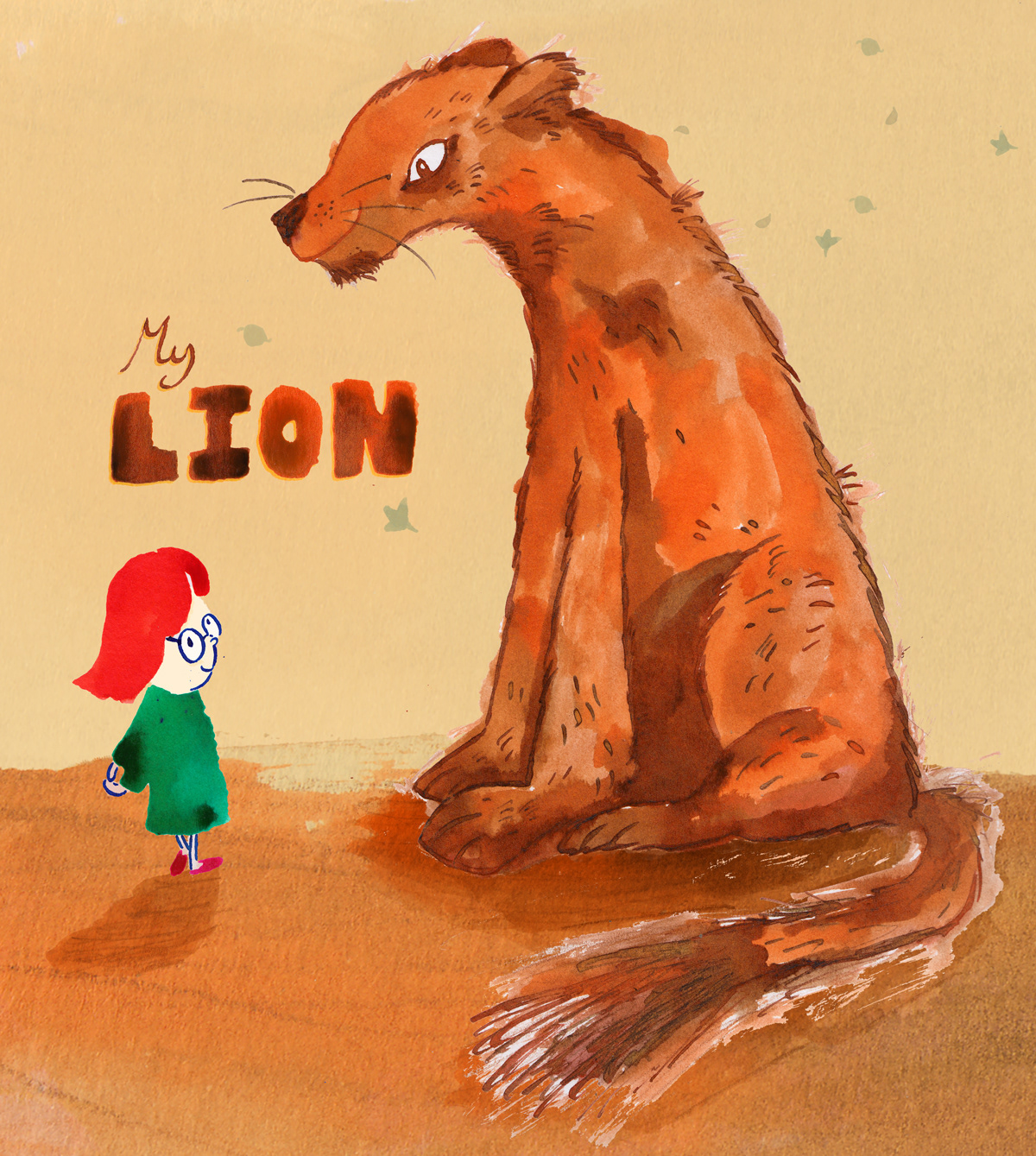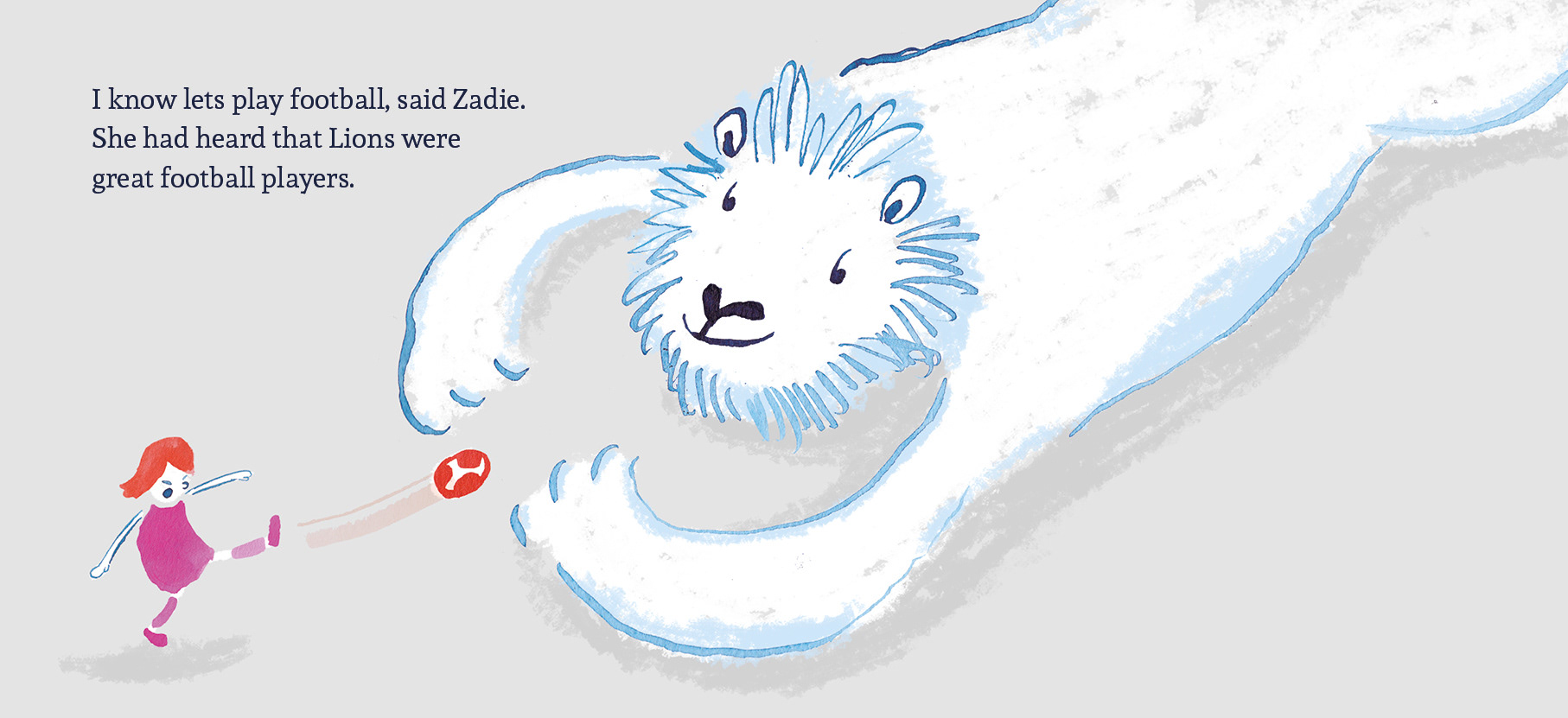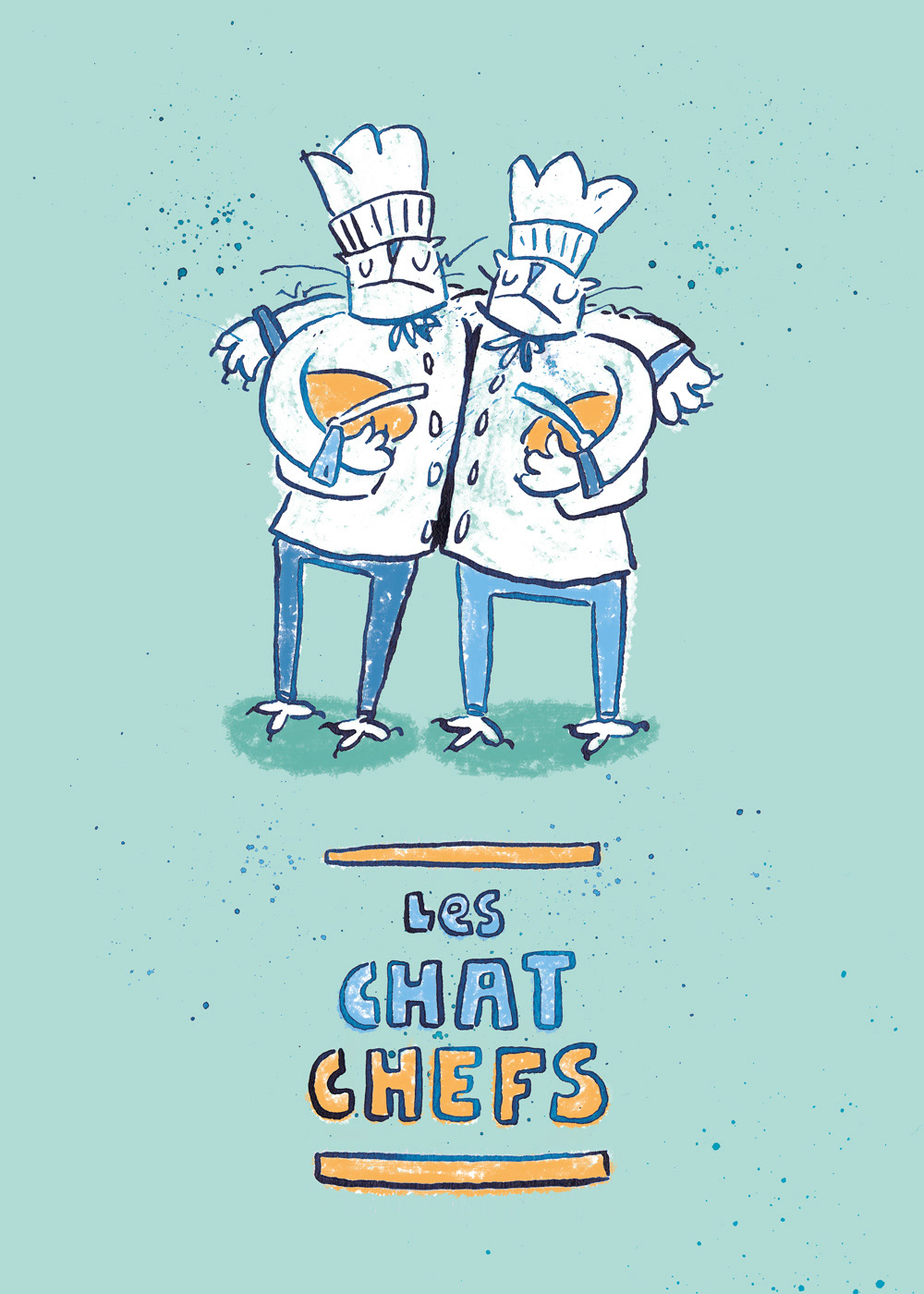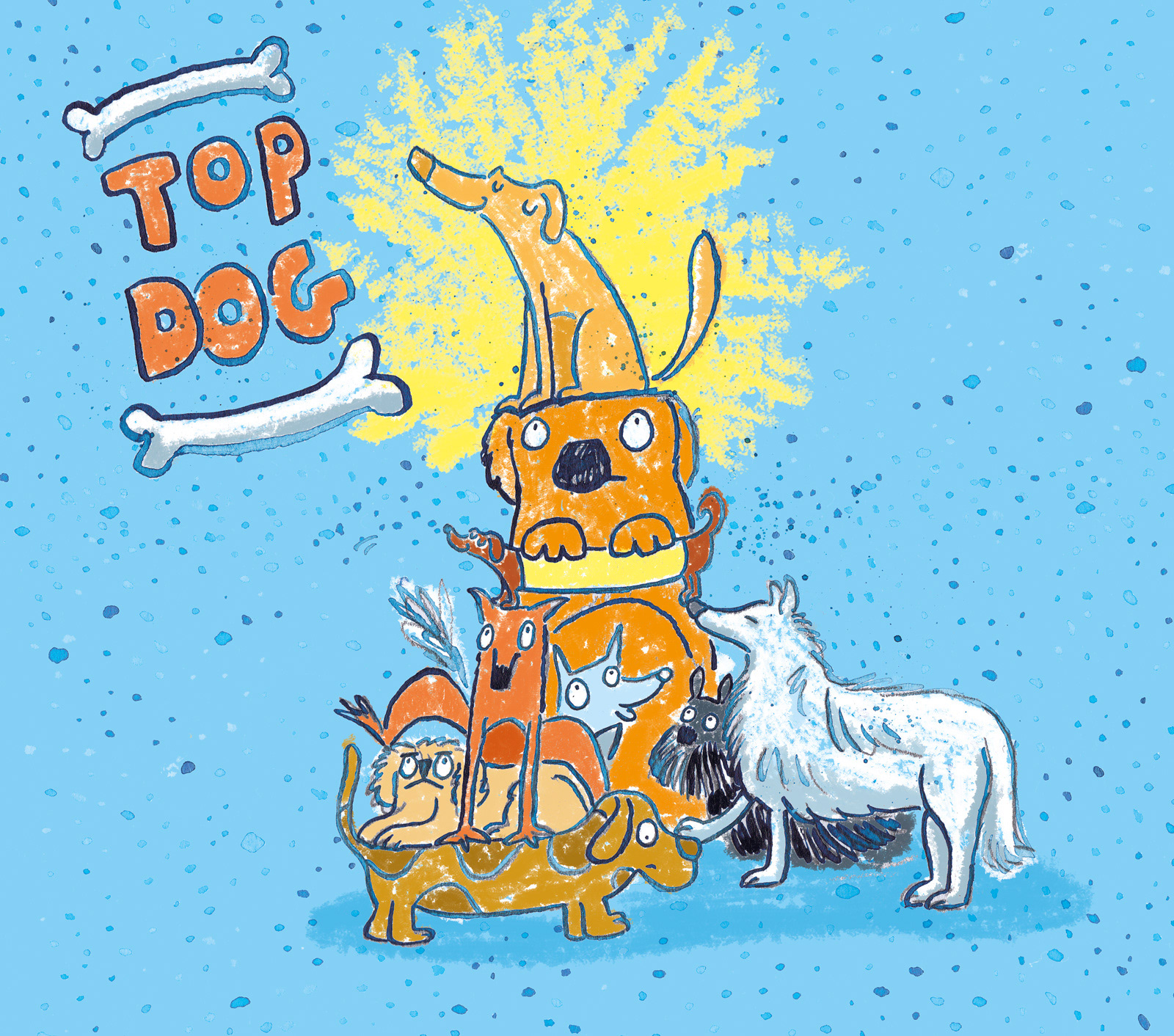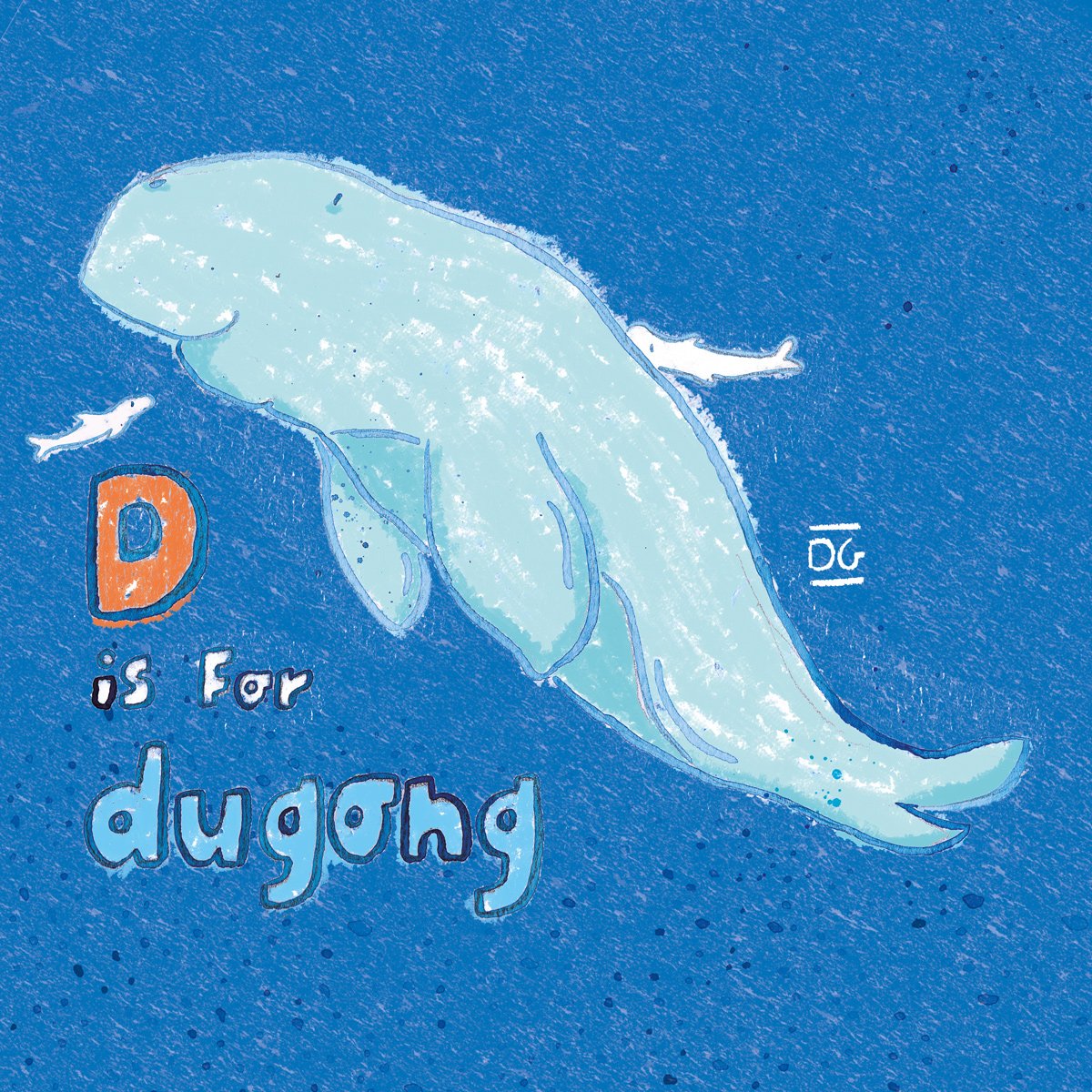May 25, 2017
App Design and UX: Onstreet Community Concept
App Design and UX: Onstreet Community Concept
We are checking out this app design concept that involves UX and motion for a community called: Onstreet. Designed by Seoul-based designer Jaejin Bong, it’s an app based on a mixture of photo app and a shopping experience. So basically you’re sharing your daily look and you can tag the items that you are wearing so others can collect that information to buy them. It’s an elaborate take on mobile shopping and I think that the idea is quite unique. I am not personally the genre of person to take a picture of my outfit but there’s a certainty of a market of users for this experience and I’ll be intrigued to see how the future holds as the retail experience is slowing dying. Check it out!
Behind this concept is the work from Jaejin Bong who is a UI & Graphic Designer based in Seoul, Korea. You should definitely check out his Behance for more projects.
ONSTREET is the service that is literally used on the “Street”. Street shows everyone’s fashion.
Gallery
More Links
- Make sure to follow Jaejin on Behance
AoiroStudio
May 25, 2017
Source: Abduzeedo UI/UX
May 24, 2017
Mural Design & Illustration by Ben Johnston
Mural Design & Illustration by Ben Johnston
Let’s take a look at this mural design & illustration by our good friend Ben Johnston who has been doing beautiful and crazy huge murals for the last couple years. We always have been fan of his work on ABDZ and also seeing his progression as well. Let’s sit back and admire his latest on a mural for a distillery located in Toronto. Art that is indeed going to be frozen in time.
Behind this mural is the work from Ben Johnston who is a designer and letterer based in Toronto, Canada. You should definitely follow his lettering works on Behance.
Custom typographic mural designed and painted for Yongehurst Distillery in Toronto
Photo Gallery
More Links
- Check out Ben’s Personal Site at benjohnston.ca/
- Make sure to follow Ben on Behance
AoiroStudio
May 24, 2017
Source: Abduzeedo Illustration
May 24, 2017
Filmmaker In Focus Series: This is Your Death and Walking Out
Our next Filmmaker In Focus Series features two films that couldn’t be more different from each other yet share a common thread of humanity in unsteady ways. In This Is Our Death, Giancarlo Esposito tells a story about host Adam Rogers’s new game show, where contestants end their lives for a chance to win money and will stop at nothing to attain the number one spot in the ratings. Esposito is a celebrated film, television and stage actor, director and producer with a career spanning five decades. He is well known for his iconic portrayal of drug kingpin “Gus” Fring in AMC’s critically acclaimed award-winning series Breaking Bad, for which he won the 2012 Critics Choice Award and earned a 2012 Emmy nomination.
In Walking Out, directed by Alex and Andrew Smith, David travels to rural Montana for his annual hunting trip with his lonely, estranged “off-the-grid” father. An encounter with a bear cub results in serious injuries to both David and Cal. David must figure out what to do next while simultaneously healing his broken spirit. The brothers wrote and directed, The Slaughter Rule, starring David Morse and Academy Award Nominees Ryan Gosling and Amy Adams, which premiered at the 2002 Sundance Film Festival. Learn more about these filmmakers below:
This Is Your Death

Q: Tell us a little about your film?
A: This is Your Death is a unflinching look at reality television. Where a disturbing hit game show has its contestants ending their lives for the publics’ enjoyment. The story captures the sad truths about the American public’s desire to be both famous and witness to intense spectacle. Its a dark drama that’s character driven, relevant, and unrelenting. But when the boundaries seem like they can’t be pushed any further game show host, Adam Rogers steps in to break down the wall. He will only be satisfied if this reality show is number one in the ratings and he will stop at nothing to make sure he gets there. Even if it means letting go of his humanity.
Q: What motivated you to tell this story?
A: I made this film at a time when people are looking to be connected to each other, yet seem to be more connected to their iPhones, computers, and TV sets. When texting has replaced talking and reality shows have taken over the airways, what has become most gratifying is sensationalist, horrific, and voyeuristic . People have lost their focus and attention and have no patience for anything other than reality television or capitalized war live on their local network. It seems evident that we have outsourced our compassion and outsourced our empathy. We find ourselves riveted to our television sets viewing the reality of our existence through a scripted version of who we really are. Or live tragedy playing itself out violently on our news.
Q: Tell us a random fact?
A: Im a spiritualist and a yogi.
Walking Out

Q: Tell us a little about your film?
A: Our film is an ‘intimate epic’ about a city mouse boy and his country mouse father doing their damn best to connect with each other while facing tremendous obstacles.
Q: What motivated you to tell this story?
A: The short story it is based on had haunted us for 30+ years. And we believe in hunting down the thing that haunts you– that’s where the deepest, most emotional stories reside. It was, basically, a film we needed desperately to see, so we made it!
Q: Tell us a random fact?
A: I’m from Montana but have deep ATX roots, having gone to grad school here in the 90’s and taught at UT for almost a decade. I’m ambidextrous. I’m a twin. I’m kind of stuck in the 70’s, cinematically.
Explore More Content From SXSW 2017
Get inspired by a multitude of diverse visionaries at SXSW – browse more 2017 Keynotes, Featured Sessions, Red Carpets, and Q&A’s on our YouTube Channel.
Follow us on Facebook, Twitter, Instagram, and SXSW News for the latest SXSW coverage, recaps, late-breaking announcements, and updates.
Answers for Walking Out provided by Alex Smith
The post Filmmaker In Focus Series: This is Your Death and Walking Out appeared first on SXSW.
Source: SxSW Film
May 24, 2017
Here Are All The Goods The U.S. Actually Imports From Mexico A Year
One of the promises that Donald Trump made while on the campaign trail and after his election was to bring about discussions about the North American Free Trade Agreement. In his mind, NAFTA has been a “catastrophe” for American workers and needs to be renegotiated in favor of the U.S. He has even expressed his desire to implement a 20% import tax on all products coming in from Mexico to finance his promised border wall.
Currently, roughly $304.6 billion in goods that pass over the border from Mexico are untaxed under NAFTA. The idea of a blanket tax on all goods may not, however, be the most appropriate way to go about taxing these goods.
Quartz collected data from the U.S. Census Bureau—product categories, the amount imported, and the tax collected—to give a snapshot view of exactly how much money the U.S. spends on goods coming from Mexico and how much of the U.S.’s international purchases come from Mexico. Typically, these are the two components that policy makers consider when deciding what merchandise or product categories to tariff.

Categories include vehicles, other than railway or tramway rolling stock; articles of iron or steel; fish, tools, implements, cutlery, and flatware of base metal; trees, plants, bulbs, roots, cut flowers and ornamental foliage; and photographic and cinematographic goods to name a few.
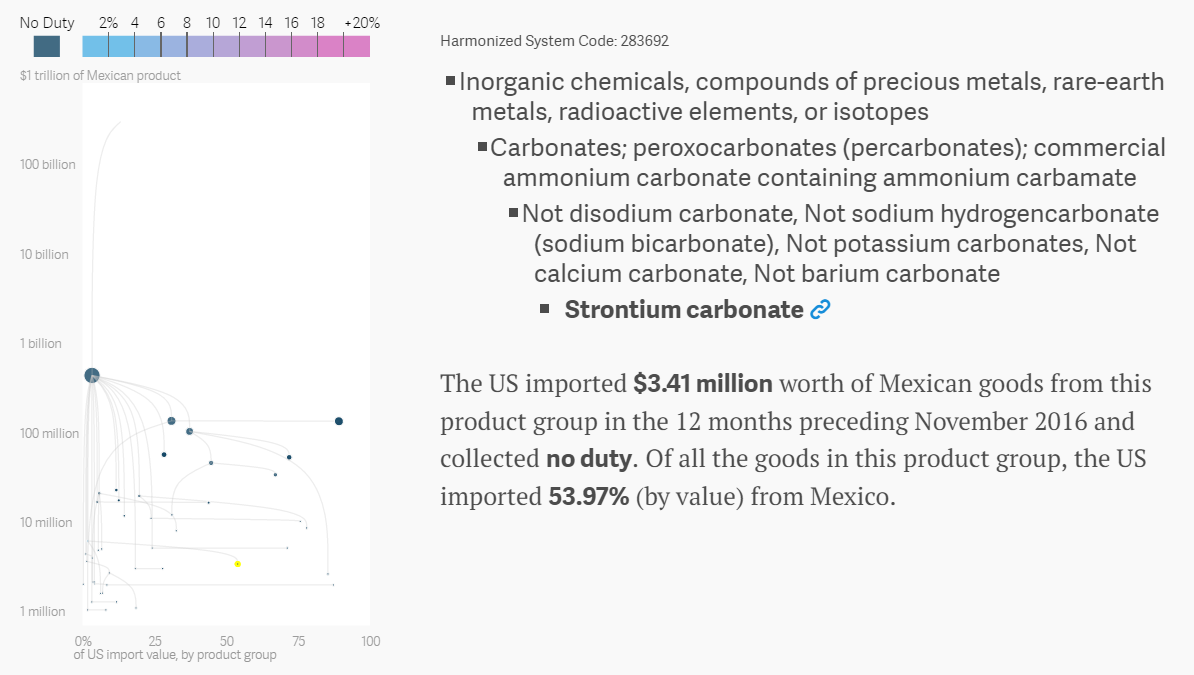
Inorganic chemicals, compounds of precious metals, rare earth metals, radioactive elements or isotopes
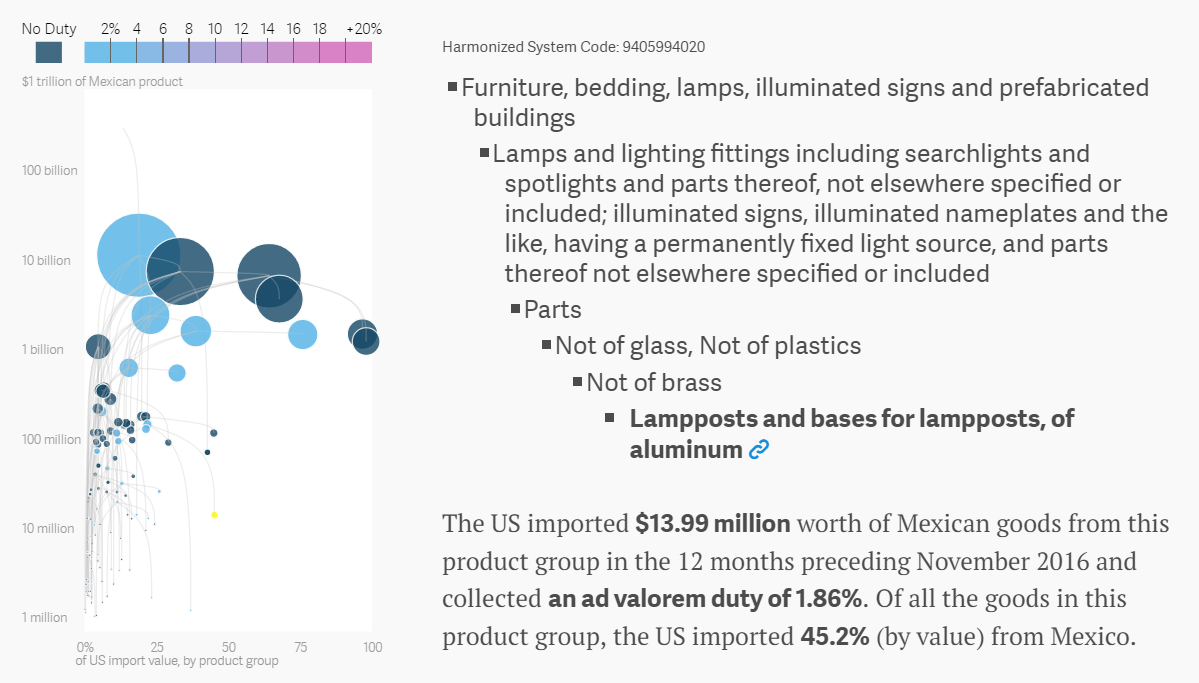
Furniture, bedding, lamps, illuminated signs, and prefabricated buildings
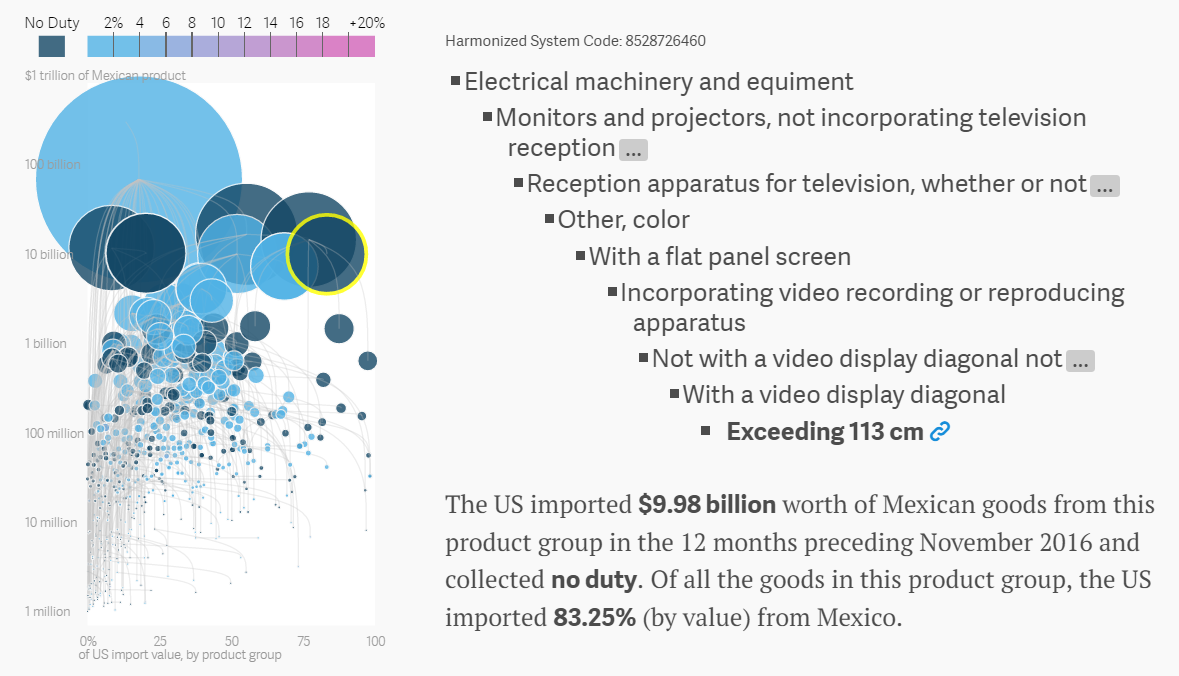
Electrical machinery and equipment
According to the data they collected, almost two-thirds of the trade categories had no taxes collected on products coming in from Mexico and essentially no tariff was collected on 92% of the categories.
So, would a blanket tax be the best course of action? Considering the U.S. depends solely on Mexico for many products, the taxes would basically just be imparted on to American consumers. Also, there are products that the U.S. can obtain from other suppliers and products that the U.S. gets very little of from Mexico. This means that a tax may not be as effective as the Trump administration would hope.
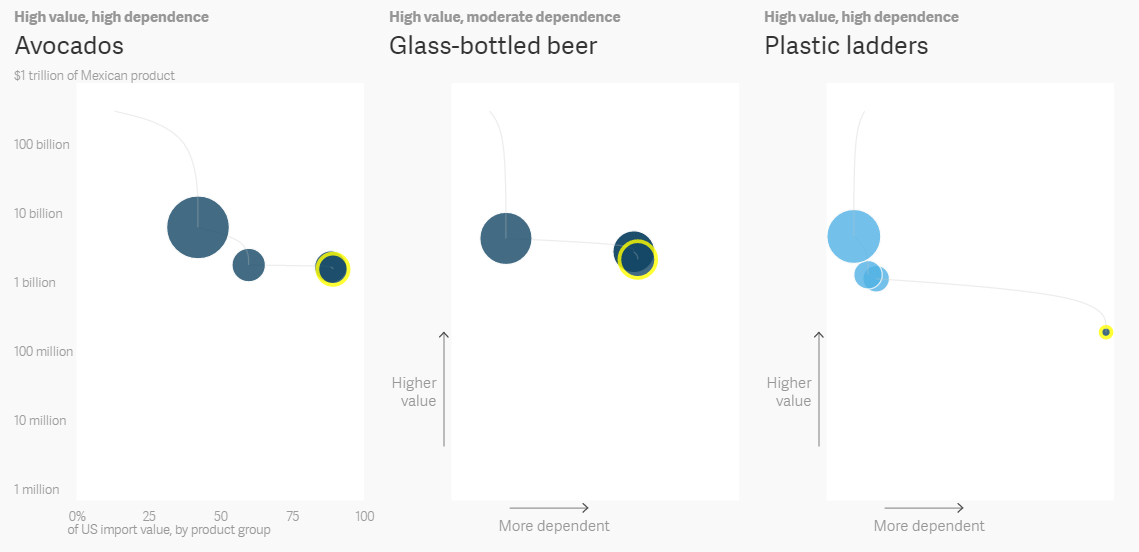
Avocados: “Mexico is the world’s largest grower of avocados and the U.S. is the largest buyer. No duty is collected on them at the border.” Glass-bottled beer: “63.4% of U.S. imported beer is brewed in Mexico. Most of it—$2.8 billion—comes in glass bottles and enters the U.S. tax-free.” Plastic Ladders: “America buys 97.2% of the plastic ladders it imports from Mexico, $191.5 million in trade.”
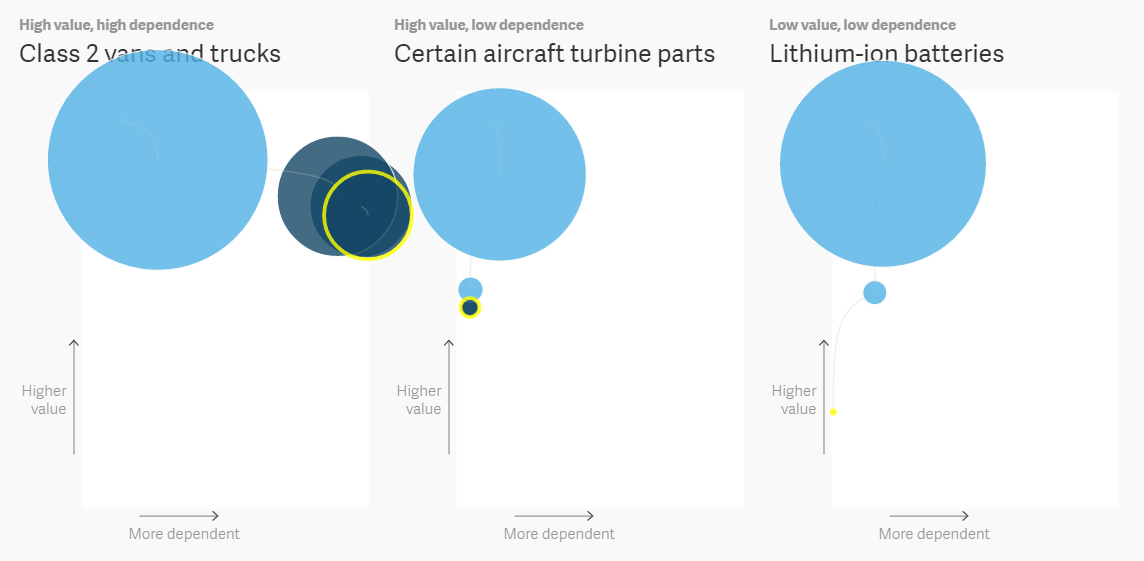
Class 2 vans and trucks: “The second-most valuable import product category, $12.3 billion, is smaller vans and full-size pickup trucks. 99.6% of these U.S. imports come from Mexico.” Certain aircraft turbine parts: “Mexico supplies the U.S. with $570 million of these unfinished parts but that’s only 4.7% of what the U.S. imports.” Lithium-ion batteries: “The U.S. imports just 3.1% of its lithium-ion batteries from Mexico but that still amounts to $17.4 million in trade.”
Check out the full set of data visuals here.
Source: Visual News
May 23, 2017
Endearing Children’s Illustration by Darren Gate
Endearing Children’s Illustration by Darren Gate
We were so delighted when we received a note of new illustration work from Darren Gate, an illustrator focusing mainly within educational, children’s and editorial markets. A talented storyteller with a knack for character creation he enjoys conveying humor, intrigue and sometimes a little sadness too. His mediums of choice tend to be watercolor, acrylic inks and pastels with final editing in Photoshop.
As a new mom myself who struggles with getting her 1 year old to eat carrots I was immediately drawn to Darren’s charming story about a young girl who, you guessed it, won’t eat carrots! Check his smile-inducing illustrations here and be sure to peruse his entire site for even more eye-catching work.
Illustration work
About Darren Gate
Darren and I am an Illustrator based in bonnie Glasgow, Scotland. My experience ranges across editorial illustration, children’s fiction and educational resources, Graphic Design and Animation. For more information check out https://darrengate.myportfolio.com/
ibby
May 23, 2017
Source: Abduzeedo Illustration
May 23, 2017
HOW TO DO EFFECTIVE CONTENT MARKETING: USE EMPATHY
This article originally appeared on Column Five.
In 2015, branded content output climbed 35% per channel, but content engagement decreased by 17%. What does that say? More content doesn’t mean more engagement.
As a founder of a content marketing agency with a decade of experience, I know this firsthand. You can make all the content you want, but if your audience isn’t connecting, it won’t help your cause.
Successful content marketing is about attracting people to your brand through content—be it educational, inspirational, or entertaining—with the goal of turning them into customers over time. Ultimately, it’s about engaging your audience, not selling to them.
Too often content marketers ask, “What kind of content will help me sell more?” when they should ask, “What kind of content will provide high value to readers so it will attract customers?” The answer to that is simple: Focus on solving their problems—not yours.
A friend recently said to me, “When you’re thinking about content, consider the hell that your clients are trying to escape from and the heaven that you want to deliver them to.” While this might be a dramatic statement, it certainly works for content marketing, especially if your goal is lead generation or increasing sales.
If you can clearly communicate that you understand your audience’s struggle and have the expertise to help solve their problem, your audience sees that you really care, which makes them more eager to form a relationship with you.
The key to creating that type of content? Empathy.
WHAT IS EMPATHY?
According to Merriam-Webster, empathy is the ability to understand and share the feelings of others. As Dr. Brene Brown notes, empathy is “feeling with people.” In the context of marketing, feeling with people is about putting your audience’s needs before your own, putting yourself in their shoes to understand the challenges they face. In short: Empathetic marketing considers your audience before your messaging.
“Yeah, but isn’t content marketing about educating others?” Sure—about the things they need and want to know. When you follow the empathy paradigm, you ultimately make your job easier. Create content that helps reduce your audience’s pain and frustration, and your brand automatically becomes the hero.
Empathy is not talking about yourself, your services, your pricing, and how great you are. It is not trend-jacking in a desperate attempt to create relevance. (Does a SaaS company that operates in the financial service industry need to be commenting on what Kanye West and Taylor Swift are up to? Probably not.)
This doesn’t mean that you can’t ever promote or sell your company, but there is a time and place for this type of content (usually in the form of sales collateral). Empathy means meeting your audience where they’re at.
HOW TO INCORPORATE EMPATHY INTO YOUR CONTENT MARKETING
To inject more empathy into your marketing, there are three simple steps you can take. Consider how you might adopt these practices into your current process.
1) DEVELOP MARKETING PERSONAS
To understand your audience and what will appeal to them, you need to know who they are. Creating customer personas, also known as “psychographic mapping,” involves asking and answering a series of questions about who your customers are and what makes them tick.
Direct conversations with existing customers can help fill in these blanks. The more information you gather about your audience, the better you can identify opportunities to create:
- Content of value: This will enable them to learn more and do a better job in their work.
- Content that creates an escape: Not everyone loves every aspect of their routine. Creating a welcome distraction can be a great way to establish goodwill.
Try this exercise to create your own personas in under an hour. (For the record, we made three different personas, which include everything from our customers’ favorite podcasts to what they worry about at night.)
2) THINK ABOUT YOUR PERSONAS BEFORE YOU CRAFT YOUR CONTENT STRATEGY
Many marketers make a crucial mistake when creating a content strategy. They address these items first:
- How much content to create
- Objectives
- Distribution strategy
- The content mix
- The content team
- The budget
- Workflow management and process
- Tools to manage the content supply chain
And they think about the customer last. Reverse the process; use your customer personas to influence your strategy. Always, always, always remember: customer first, ideas second.
3) REFINE YOUR IDEAS
Once you generate your rough ideas based on those personas, you can refine those ideas using tools and resources available. This ensures you are always creating meaningful and relevant content for your customers. Ways to refine your ideas:
- Find out what questions people are asking search engines. This is a great jumping-off point for creating content that answers the questions your customers are asking. (We often research the keywords we’re targeting to find out what types of phrases people are using, such as “What is an infographic?”)
- Research other industry publications. Look around to see what other people in your industry are saying, then do a better job. But avoid what they’re saying. (At times, we’ve taken a contradictory stance on a specific subject in our industry.)
- Check events calendars. You may be able to provide useful content around an event your audience is interested in. (For example, we’ve designed camping guides for Coachella and walking maps of San Francisco for conferences.)
ALWAYS KEEP YOUR CUSTOMERS IN MIND
The last thing you want to do is create content that no one cares about; that is a waste of your time and resources. To pursue empathetic content marketing, make this your mantra: Decrease the amount of selling in your content and increase the amount of time listening to and thinking about your customers.
This doesn’t mean you can’t ever ask your audience to sign up for a newsletter or download an e-book. It means prioritizing compelling content that attracts them to you so that you can offer those goods and move them along the buying process.
For more tips on marketing, learn about the strategy we used to increase our leads 78% in 6 months, find out what 7 traits will make you a better marketer, and learn how to create content that provides true value to your audience.
Source: Visual News
May 23, 2017
SXSW Joins Mercedes-Benz to Host Future-Focused Convention in Frankfurt

SXSW® is about pushing boundaries. For over thirty years, our goal has been to create a platform providing creatives the knowledge, access, and tools to make vision become reality. From musicians to startups, from film distribution to bioscience, SXSW is a place where innovation and ideas find a new audience – a place of unparalleled discovery.
But SXSW provides more than just a place, it has become a vibrant community. Today, SXSW announces a new effort to support you – our community – by expanding our boundaries into Europe.
Frankfurt, Germany is a geographic and cultural center of Europe, with over 450,000 people traveling through the central train station each day. Its history as a destination for cultural exchange and international commerce meets today’s technology and creative energy to make it one of Europe’s most dynamic cities. People of approximately 180 nationalities live within five blocks of central station, making Frankfurt a perfect fit for discovery and inspiration.
Against this backdrop, SXSW is proud to collaborate with Mercedes-Benz to host me Convention, a critical dialogue on the future. This September 15-17, me Convention will offer an exciting platform for open conversation in the historic Festhalle Frankfurt, which features award-winning architecture and a festival-like setup. Taking place alongside the world’s largest International Motor Show (IAA), me Convention hosts three days of workshops, expert talks, keynotes, co-working space, interactive labs, and evening events throughout the city.
2017 Topics include:
New Creation – Manufacturing and distribution are no longer barriers to creation, but time and attention have become scarce resources. People are increasingly asked to make snap judgements and process huge amounts of information – what are the effects, opportunities, responsibilities, and consequences of the “always on” generation? How can businesses at all scales benefit from collaborating with consumers during the R&D and creation process?
New Leadership – Traditional leadership and business models are rapidly evolving. What are the most effective strategies, technologies, and possibilities within this new relationship to work and leadership?
New Realities – Analogue and digital technologies now blend seamlessly to create new realities. How will artificial intelligence, bioscience, genetic engineering, and mixed reality shape our lives? What will we gain by blurring the borders between real and artificial, human and machine, natural and man-made, and how can we adapt to these new realities?
New Urbanism – The evolution of our living environments from housing as a service to smart, connected homes and the expansion of urban centers around the world is now underway. How do we intentionally shape our cities and surrounding areas to create engaging, equitable, and healthy communities?
New Velocity – Changes that once required long and complex processes are now immediate – societies transform quickly, technological innovations spring up daily, cities change their faces overnight. How does this rapid acceleration affect our well-being and environment, and how can humans not only cope, but thrive, living with exponential change?
The full lineup of speakers and sessions will be announced over the next few months.
Share your vision for tomorrow by registering today! A limited number of badges are now on sale for the early-bird rate of €300 EUR ($337 USD). Follow @meconvention on Instagram and Twitter, and sign up for the me Convention newsletter.
Image Courtesy of Liganova
The post SXSW Joins Mercedes-Benz to Host Future-Focused Convention in Frankfurt appeared first on SXSW.
Source: SxSW Film
May 23, 2017
‘District 9’ Director Neill Blomkamp to Release Experimental Short Films On Gaming Site Steam
“District 9” director Neill Blomkamp’s Oats Studios will experiment with selling short films on gaming website Stream as a way to develop feature film ideas. Many shorts will also be available on the Oats Studios YouTube channel, but a few will be exclusive for purchase as a way to see if the ecosystem works for film, Blomkamp said.
READ MORE: ‘Kill Switch’ Teaser Trailer: Dan Stevens Stars in Apocalyptic Sci-Fi Thriller — Watch
If I sold experimental short films on @steam_games as tests for potential full feature films, would people watch them?
— NΞill Blomkamp (@NeillBlomkamp) April 9, 2017
The director, also known for “Elysium” and “Chappie,” floated the idea on twitter: “If I sold experimental short films on [Steam Games] as tests for potential full feature films, would people watch them?” He added that concept art, 3-D assets, and Maya scene files would be available for download through Steam. “I want to have direct open dialogue with audience going forward,” said Blomkamp, before debuting this teaser from a short called “RAKKA.”
Originally from Johannesburg, South Africa, Blomkamp is best known for the dystopian sci-fi film “District 9,” which he co-wrote with his wife, Terri Tatchell, and was produced by Peter Jackson. “District 9” received widespread critical acclaim and box office success for its creative use of fictional found footage and political allegory to apartheid. It was based on a short film, “Alive in Joburg.” Steam is a popular online gaming platform developed by Valve, the video game developer behind “Half-Life” and “Left 4 Dead.”
The Oats Studios YouTube is still pretty sparse, but it’s clearly a place for Blomkamp to test out short ideas, like this presidential motorcade that looks like something out of “Mad Max: Fury Road.” Check it out:
Stay on top of the latest breaking film and TV news! Sign up for our Festivals newsletter here.
Source: IndieWire Digital TV
May 22, 2017
What Software Gets The Best (And Worst) Feedback From Users?
Thhis article originally appeared on Priceonomics.
Using software can be a harrowing experience or it can be a delightful one.
For any given need you may have, there are likely dozens of software companies offering competing products. How do you know if the software is any good? One straightforward way is to find someone that uses the software and ask them if they recommend it or not.
We analyzed data from Priceonomics customer Wise Buyer, a company that analyzes customer feedback from 5,000 real-life users of various software programs. The data set contains responses from users as to whether they recommend the software product or not. The analysis covers 6 types of software: landing page builders, form builders, portfolio builders, live chat, email marketing, and ecommerce.
In each sector, how do various software stack up against one another? Which receive the best and worst customer satisfaction ratings? And what are the best and worst overall?
***
First, let’s average out the overall customer satisfaction rates of each type of software to get an idea of how they compare. The figures below represent the percentage of users who we talked to that recommended the product. For each overall category below, we talked to between 450 and 1,450 total users.

Data source: Wise Buyer
Looking at this data, it’s clear that some categories seem to enjoy higher average customer ratings than others.
Overall, the average satisfaction rating across the board is 85%. Live chat software (90%) is a healthy 5% above this, followed by email marketing software (89%), and form builders (88%). Portfolio builders (83%), landing page builders (82%), and ecommerce software (79%) all fall below the average.
With these averages in mind, let’s break down each of these categories and took a closer look at the companies we reviewed in each one, beginning with landing page builders.
Landing page builders are software that allow a user to create a webpage—particularly, one that is promotion-specific, or represents a business.

Data source: Wise Buyer
Overall, the nine landing page builders we reviewed averaged an 82% customer satisfaction rate. Five products fell above that figure, and four below. Thrive Landing Pages came out on top, with a 93% satisfaction rate, followed by OptimizePress and Instapage. Wishpond, at 65%, came in last.
Form builders—software that assist in the creation of online forms of any kind (lead generation, payments, etc.)—fared slightly better overall, with an average satisfaction rating of 88%.

Data source: Wise Buyer
In this category, Cognito took the cake, with 95% of customers favoring it. Even the three products which fell below the average (JotFrom, Wufoo, and FormStack) still received scores of over 80%.
Next, let’s turn to portfolio builders, software used by photographers, visual designers, artists, and models to create online portfolios of work. This arena had a few more competing products.

Data source: Wise Buyer
There was a bit more variance in ratings here than in previous categories.
Format topped the list with a 95% rating, followed by 22Slides (92%), AllYou (90%), and SmugMug (90%). Nearly 30 percentage points behind—and more than 10 points off the average—Zenfolio (70%) and Viewbook (69%) did not fair as well.
Live chat software, used mainly to build real-time customer service communications, also had quite a wide range.

Data source: Wise Buyer
In this category, four products—Intercom, Tawk.to, MyLiveChat, and My Chat—scored an impressive 98% satisfaction rating. Nine other products scored the average (90%) or higher, while 10 fell below that mark.
Email marketing software (used to create mailing lists) turned out an equal number of high performers: 9 at or above the 89% average.

Data source: Wise Buyer
Interestingly, four companies—Mailerlite (97%), ConvertKit (96%), Constant Contact (96%), and Robly (94%)— outpaced the industry favorite (at least among connoisseurs of podcast advertising), Mailchimp (93%).
Lastly, ecommerce software (used for commercial transactions on the Internet) featured a clear winner in Shopify (98%)—a whopping four percent above the competition.

Data source: Wise Buyer
Shopify, an industry leader, came out on top with a stunning 98% recommendation rate. The familiar faces of Squarespace (94%) and GoDaddy (83%) fell above the average (79%), while UberCart (78%), Wix Commerce (77%), and Weebly Commerce (76%) fell below it.
***
Across all categories, which individual software companies are consumer favorites? The list below is color-coded by software type so you can see which categories tend to rank higher or lower.

Data source: Wise Buyer
Looking at the data in aggregate, software programs that deal with direct communication (live chat, email marketing) perform the best – the software does what it’s supposed to do. On the other hand software more on the service back-end (ecommerce) and are potentially more complex, rank less well.
Source: Visual News
May 22, 2017
Graphic Design: Paper Craft Project Inspired by The Little Prince
Graphic Design: Paper Craft Project Inspired by The Little Prince
Le Petit Prince is a graphic design project created and shared by Rafa Miqueleto. It was a commissioned work done inspired by The Little Prince movie. One of the coolest things about this project is the tools and materials used. It’s a paper craft full of style. The details and the dimensionality added by layers of papers and folds is just beautiful. In addition to that, and the most amazing in my opinion, is the irregularities of the cuts. I have tried to do this type of work in Illustration and Photoshop, however it always end up looking to uniform or computer generated. Nothing can beat the real deal, it’s almost a homage to graphic design projects from a different era, an era without computers.
Rafa Miqueleto is a graphic designer and illustrator from Sao Paulo, Brazil. He has a super strong portfolio with more amazing projects like this one. I highly recommend you to check it out at http://cargocollective.com/miqueleto
Graphic design and paper craft

Making Of
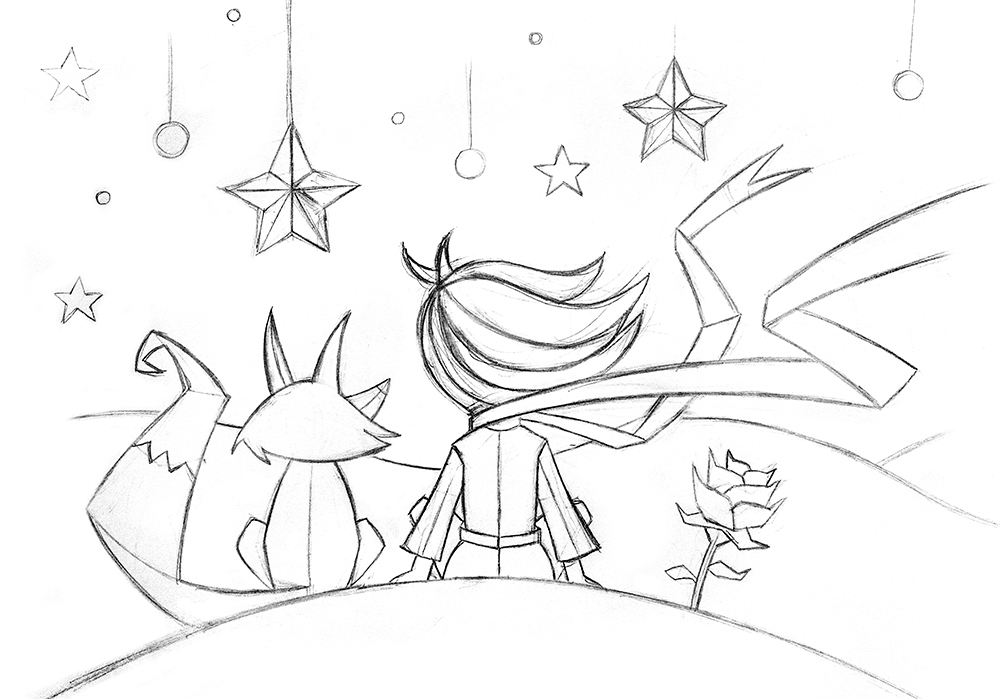








abduzeedo
May 22, 2017
Source: Abduzeedo Illustration
